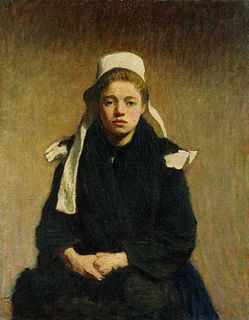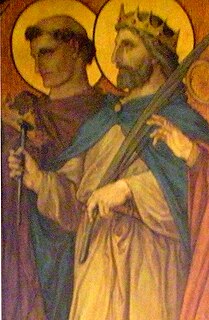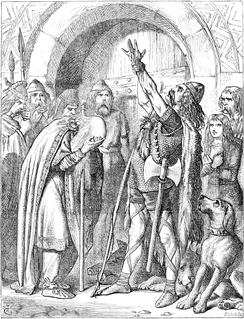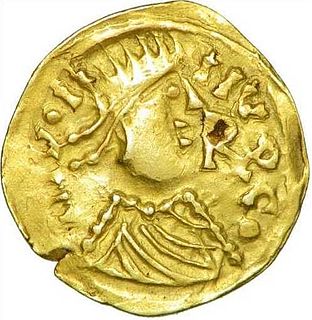This article does not cite any sources .(May 2009) (Learn how and when to remove this template message) |
Count of Vannes was the title held by the rulers of the County of Vannes.
This article does not cite any sources .(May 2009) (Learn how and when to remove this template message) |
Count of Vannes was the title held by the rulers of the County of Vannes.
Bretons held the hinterland around Vannes (Breton : Gwened) as early as Waroch (Gwereg I) in the early 6th century. He and his successors established a petty kingdom in the area. His son Canao began killing his brothers rather than divide the patrimony, but his brother Macliau, the bishop of Gwened, not only escaped but successfully annexed neighboring Cornouaille from an underage ruler who had been left in his care. St Judicaël successfully unified the Breton states in the early 7th century, but they split once again and were not reunified until Nominoë in the 9th century.

The Bretons are a Celtic ethnic group located in the region of Brittany in France. They trace much of their heritage to groups of Brittonic speakers who emigrated from southwestern Great Britain, particularly Cornwall and Devon, mostly during the Anglo-Saxon invasion of Britain. They migrated in waves from the 3rd to 9th century into Armorica, which was subsequently named Brittany after them.

Vannes is a commune in the Morbihan department in Brittany in north-western France. It was founded over 2,000 years ago.

Breton is a Southwestern Brittonic language of the Celtic and Indo-European language family, spoken in Brittany.
Nominoë (Nevenoe) was certainly titled count of Vannes, appearing as such on two charters. It is uncertain when he was raised to the office, however: it may have been as early as 819 or as late as 834. His son and successor Erispoë seems to have used the area as a similar base but, after his assassination by his cousin Salomon (Salaün), the county went to a Ridoredh. A prominent landowner in the area, he was succeeded by his elder son Pascweten and his younger son Alan eventually rose to become King of Brittany. Upon Alan's death, Brittany was overrun by several Viking raiding parties. The Countship of Vannes was interrupted from either 907 or 919 to approximately 937 when Alan the Fox returned to Brittany. Alan the Fox had been in exile in England. Defeating the Vikings at the 939 Battle of Trans-la-Forêt, he reasserted himself both as Count of Vannes and Duke of Brittany. At this point, the title was effectively merged with that of the Duke of Brittany. After the death of the childless Drogo, the Counts of Rennes ceased to use the title. It was effectively merged to the crown of France and thus extinguished under the Third Republic.

Salomon was Count of Rennes and Nantes from 852 and Duke of Brittany from 857 until his death by assassination. He used the title King of Brittany intermittently after 868. In 867, he was granted the counties of Avranches and Coutances.
Pascweten was the Count of Vannes and a claimant to the rule of Brittany. He was a son of Ridoredh of Vannes, a prominent and wealthy aristocrat first associated with the court of Erispoe in the 850s. He owned vast landed estates and salt works in southeastern Brittany and was a patron of Redon Abbey.
Alan I, called the Great, was the Count of Vannes and Duke of Brittany from 876 until his death. He was probably also the only King of Brittany to hold that title by a grant of the Emperor.
Waroch I was an early ruler of the Bro Wened (Vannetais) in southern Brittany. It is unclear whether he or his grandson Waroch II is the namesake of the region.
Waroch was an early Breton ruler of the Vannetais. Waroch, or his grandfather Waroch I, gave his name to the traditional Breton province of Bro-Waroch. However, it is possible that there were several successive local leaders with this name. He is called "Waroch II" to distinguish him from a hypothetical earlier ruler, Waroch I.
Morman was a Breton chieftain who was declared King (rex) after the death of the Bretons' Frankish overlord Charlemagne in 814. He is the first personage known by name to be described as a Breton "king" and he probably ruled a warband with members drawn from throughout Brittany. He had a stronghold defended by ditches, hedges, and marshes.

Year 851 (DCCCLI) was a common year starting on Thursday of the Julian calendar.

The Duchy of Brittany was a medieval feudal state that existed between approximately 939 and 1547. Its territory covered the northwestern peninsula of Europe, bordered by the Atlantic Ocean on the west, the English Channel to the north. It was less definitively bordered by the Loire River to the south, and Normandy and other French provinces to the east. The Duchy was established after the expulsion of Viking armies from the region around 939. The Duchy, in the 10th and 11th centuries, was politically unstable, with the dukes holding only limited power outside their own personal lands. The Duchy had mixed relationships with the neighbouring Duchy of Normandy, sometimes allying itself with Normandy, and at other times, such as the Breton-Norman War, entering into open conflict.

Nominoe or Nomenoe was the first Duke of Brittany from 846 to his death. He is the Breton pater patriae and to Breton nationalists he is known as Tad ar Vro.
Erispoe was Duke of Brittany from 851. After the death of his father Nominoe, he led a successful military campaign against the Franks, culminating in his victory at the Battle of Jengland. He is subsequently referred to as "King of Brittany".
Wrhwant, Gurwant, Gurwent or Gurvand was a claimant to the Duchy of Brittany from 874 until his death in opposition to Pascweten, Count of Vannes.
Judicael was the Duke of Brittany from 876 to his death. He was a son of a daughter of Erispoe and claimed Brittany after the death of the pretenders Wrhwant and Pascweten in mid 876.

Alan II, nicknamed Wrybeard or Twistedbeard, Alan Varvek in Breton, was Count of Vannes, Poher, and Nantes, and Duke of Brittany from 938 to his death. He was the grandson of King Alan the Great by Alan's daughter and her husband Mathuedoï I, Count of Poher. He expelled the Vikings from Brittany after an occupation that lasted from 907 to about 939.

Saint Judicael or Judicaël, also spelled Judhael, was the king of Domnonée and high king of the Bretons in the mid-7th century.
Judicael, thus called in Breton sources, alias Berengar his name in Frankish sources, and sometimes known as Judicael Berengar, with both names being used together, was a Count of Rennes in the 10th century.
The Counts of Nantes were originally the Frankish rulers of the Nantais under the Carolingians and eventually a capital city of the Duchy of Brittany. Their county served as a march against the Bretons of the Vannetais. Carologinian rulers would sometimes attack Brittany through the region of the Vannetais, making Nantes a strategic asset. In the mid-ninth century, the county finally fell to the Bretons and the title became a subsidiary title of the Breton rulers. The control of the title by the Breton Dukes figured prominently in the history of the Duchy. The title Count of Nantes was given to Hoel, a disinherited son of a Duke. He lost the Countship due to a popular uprising. That uprising presented an opportunity for King Henry II of England to attack the Breton Duke. In the treaty ending their conflicts, the Breton Duke awarded the Countship of Nantes to Henry II.

Gwened, Bro-Gwened or Vannetais is a historic realm and county of Brittany in France. It is considered part of Lower Brittany.
Lambert II was the Count of Nantes and Prefect of the Breton March between 843 and 851. Lambert ruled the county in opposition to Amaury, the puppet count installed by Charles the Bald, King of West Francia. At his death, the county was effectively in Breton control. Lambert was the son of Lambert I and his wife Itta.
The Battle of Blain, also called the Battle of Messac, was fought on 24 May 843 by the forces of Lambert II of Nantes and Erispoe, prince of Brittany, against Renaud, Frankish Count of Nantes. It arose from Breton resistance to Frankish power within Brittany and disputes over control of the County of Nantes. The defeat of the Franks led to a period of Breton expansionism.

The Kingdom of Brittany was a short-lived vassal-state of the Frankish Empire that emerged during the Norman invasions. Its history begins in 851 with Erispoe's claim to kingship. In 856, Erispoe was murdered and succeeded by his cousin Salomon. The kingdom fell into a period of turmoil caused by Norman invasions and a succession dispute between Solomon's murderers: Gurvand and Pascweten. Pascweten's brother, Alan, called the Great, was the third and last to be recognized as king of Brittany. After his death, Brittany fell under Norman occupation. When Alan Twistedbeard, Alan the Great's grandson, reconquered Brittany in 939, Brittany became a duchy until its union with France in 1532.
| This France-related article is a stub. You can help Wikipedia by expanding it. |